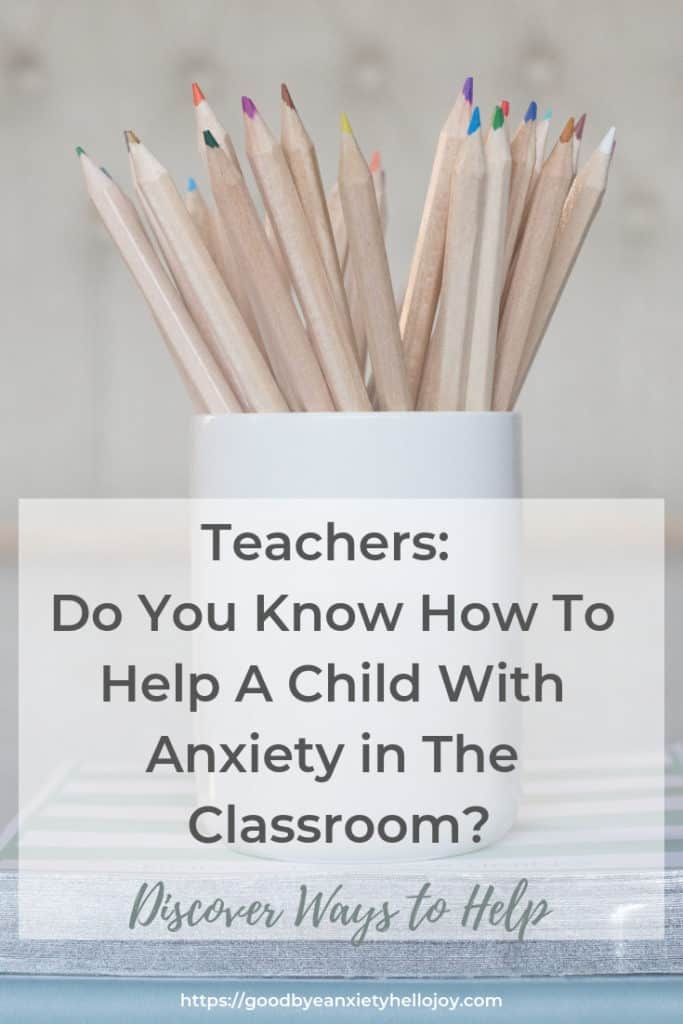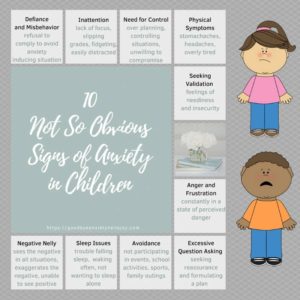Do You Know How To Help A Child With Anxiety In The Classroom?
Students spend roughly 1,000 hours at school each year. This is a significant part of each child’s life, particularly during the school year. For many children, especially young ones, they spend more of their “awake” hours at school than at home. With this in mind, teachers, you have an incredible opportunity to positively impact the whole child.
However, in order to best meet the needs of your students, you must know what to look for and how to help. During your educational training, you spent a great deal of time learning how to help students academically. But what do you know about helping a child emotionally? What happens when you cannot reach them academically because their emotional needs must be met first? Do you know how to help a child with anxiety in the classroom?
What is Anxiety?
Anxiety is an illness impacting 32 percent of children, yet nearly 80 percent of those children do not receive any treatment. Children with anxiety enter a fight or flight response when triggered. This response shuts down the frontal cortex (the area of the brain used for rational thought and decision making) and engages the amygdala (the area of the brain used for survival). While anxiety can be managed with the right tools and treatment, it often interferes with a child’s ability to function and succeed at school.
How To Help A Child With Anxiety In The Classroom
Below you will discover how to help a child with anxiety in the classroom. Before you can reach students, you need to understand anxiety as it pertains to you as a teacher and the classroom setting. Knowing this information will allow you to reach these students emotionally in order to help them academically.
I share this with you as a fellow teacher. Many of you may be thinking about how much you already do as a teacher. I agree teachers wear more hats than any other profession. This is not to add more to your workload. In fact, understanding anxiety, how it affects and presents itself in students, and how you can help a child with anxiety in the classroom, will actually decrease the amount of time you spend dealing with behaviors. You will now have the ability to respond in a way that creates results because you are working with the root cause of a child’s actions and behaviors, rather than simply reacting to the behavior that you witness.
It should be noted that as a teacher, you are not responsible for diagnosing or suggesting treatment options. The best case scenario is that parents are already aware of their child’s anxiety, and have sought necessary treatment. In this case, these suggestions will assist you in working alongside the family in making school successful for the anxious student. Unfortunately, you may not have parental support in this area. For this situation, you can use the information presented to help the anxious child while in your care during the school day.
Form a relationship with every child
Obviously, you became a teacher because you enjoy children. However, we all know, there are some children that require more time, effort, and energy than others. You must work even harder, and seek creative options in order to form a relationship with these children. Often, a child with anxiety may not seek your assistance or may even show that they do not want to form a relationship with you. It is necessary that you find a way to connect on some level.
Anxiety looks different in every kid
There is no “one size fits all” description for anxiety. Student A may have anxiety in which she expresses that she is scared, cries easily, is very clingy, and has a difficult time separating from her parents each morning. Student B may refuse to do work, express his anxiety with defiance, and snarl at those who come to help. Student C may simply be quiet and keep to himself, unable to form friendships or participate in activities. In every example, the child is showing signs of anxiety, yet none of them are similar.
Additionally, a child with anxiety may not be anxious all of the time. Often a child will be seen frolicking on the playground, laughing with friends, but once it is time to focus and work, the anxiety is triggered. The opposite is also true. A child may be on task in class and receiving high grades, but may be hostile in the cafeteria or on the playground. These situations are difficult because teachers see the child acting “typical”, assuming that the child couldn’t possibly suffer from anxiety.
Tone and Word Choice Make a Difference
The tone and word choice that you use with all children, but especially anxious children can have an incredible impact on their thoughts and actions. For example, telling children dealing anxiety to calm down only heightens their anxiety as they become frustrated that they cannot simply “calm down”. Here are 5 Calming Phrases to Help An Anxious Child and 2 Phrases You Should Never Say. You also have access to a free printable to use as a quick reminder as your work towards perfecting your word choice in talking with anxious children.
Behaviors, while not acceptable, are a response to the anxiety
Seldom will a child verbalize their anxiety. It will be shown in actions, which makes it so difficult for teachers to identify. Poor behavior choices should never be accepted, and always need to be addressed, however, you must look below the surface of the behavior and find the root cause in order to appropriately and successfully manage the behavior. As shown with Student B above, refusing to following directions or complete work is not an appropriate choice to make as a student. Teachers should not simply allow this behavior to continue. Consequencing the refusal, rather than addressing the reason that the refusal occurred serves no purpose.
A child does not like or want to feel anxious
When you see a child showing unwanted behaviors due to their anxiety, you may begin to feel frustrated that your efforts and time are being wasted. Remember, the anxious child does not like the way he or she is feeling either. This behavior does not feel good to them. They want to use tools and support to help manage these intense feelings. Do your best to remain calm and supportive in helping the child better handle their anxious feelings and thoughts.
Anxiety creates negative habits
A child who has responded negatively to their anxious feelings, instantly begin creating habits of avoidance as a response to unwanted thoughts and feelings. While the avoidance technique used is often not behaviorally acceptable, to them, this negative behavior is better than the awful feeling presented by the anxiety. As with any bad habit, change takes time and patience.
So, What Does Anxiety “Look” Like in a Classroom?
One of the greatest challenges of teaching anxious students is identifying the anxiety. Often anxiety looks like misbehavior, carelessness, ADHD, shyness, or even a learning disability. In many cases, anxiety may accompany another area of concern like Autism, Dyslexia, ELL, trauma, or issues at home. Anxiety can present itself in the following ways: (this infographic can be printed from the freebie library)
- Defiance and Misbehavior
- Inattention
- Need for Control
- Physical Symptoms
- Seeking Validation
- Anger and Frustration
- Negative Nelly
- Avoidance
- Excessive Question Asking
The most important thing you can do as a teacher recognizes that your student is struggling with anxiety. Do not worry about having the magic potion to eliminate a child’s anxiety. Focus on forming a positive relationship with this student and begin offering support to help the child manage their anxiety. You can find out more information about supporting the anxious child in the classroom by reading 5 Ways Teachers Can Help Students with Anxiety in the Classroom and 7 Simple Ways to Help Students with Anxiety in the Classroom. While it can be challenging to identify what is anxiety, remember that most classroom behaviors stem from a root cause. Knowing these keys aspects of how to help a child with anxiety in the classroom will make your job more successful while ensuring that your students are emotionally and academically empowered.


Leave a Reply